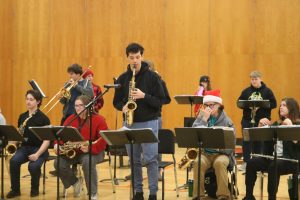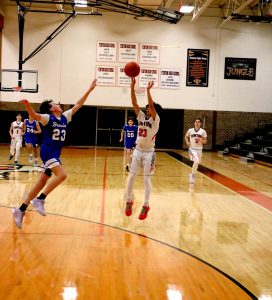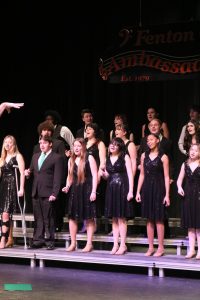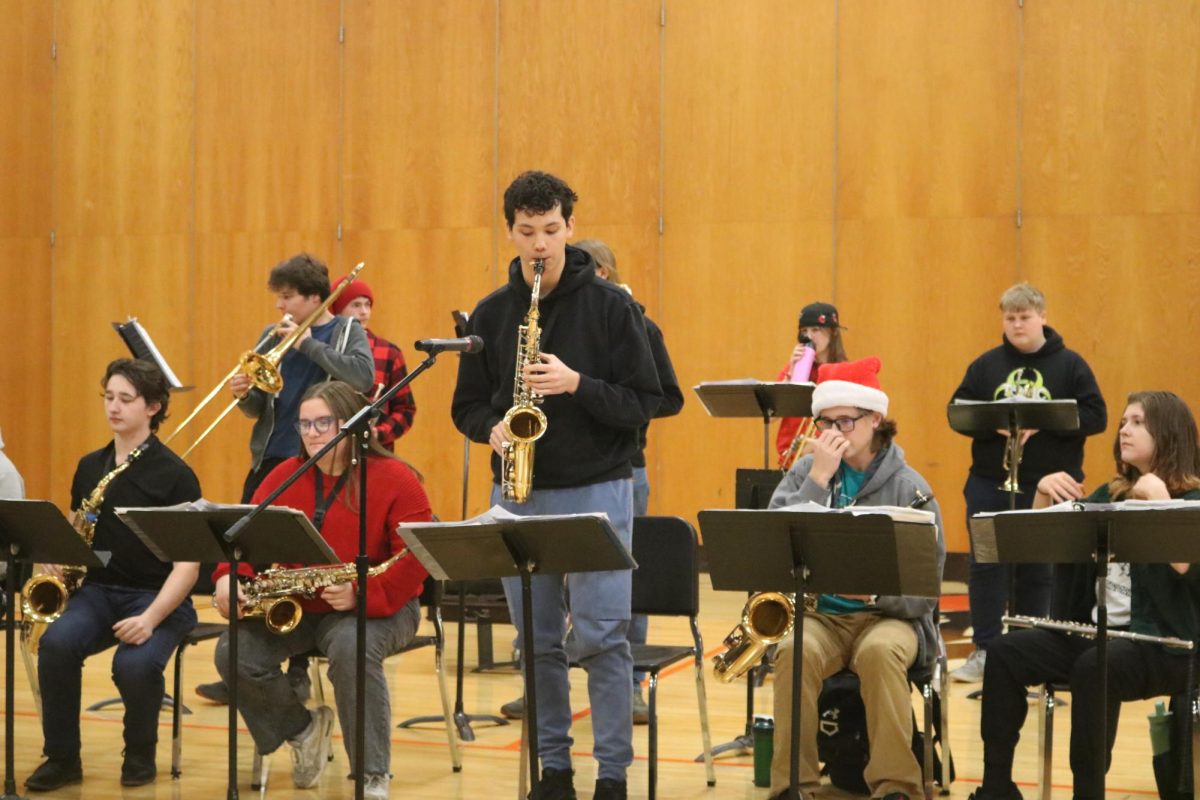Three students learn to live with situations that are not for the faint of heart
January 4, 2015
During the Cardiovascular unit in Lisa Stewart’s IB Biology class, students are challenged with dissecting a sheep’s heart.
“We do this lab to teach the kids how to monitor the blood heart valves,” Stewart said. “The sheep’s heart is similar to a human’s heart, so that is why we dissect them to educate the students on the human heart.”
“We dissected a sheep heart to better understand all the different chambers, veins and arteries and how they connect to allow blood flow,” senior Riley Moore said. “Even though we dissected a sheep’s heart, it is set up the same way and the structures are all the same as a human’s. If we had dissected a human heart, it would have looked very similar.”
Not only is it a part of the curriculum to learn about the human body and the heart, but students need to be aware that not all hearts work like they are supposed to. Although it is uncommon, roughly 25 percent of teenagers struggle with a heart defect.
The rate probability of teenagers receiving heart problems/conditions, if they were not born with one, is very low. Later in life, things such as old age, stress, use of tobacco or exposure to second-hand smoke, high blood-pressure, high blood cholesterol, or diabetes can increase the risk of heart disease.
Hailey Bates
Sophomore Hailey Bates was diagnosed with a Congenital Heart Defect at the age of one. With a closer look into her heart, doctors realized there was something wrong. There were two exit points in the lower right side of the heart and the passageway from the heart to the lungs was too narrow. “That means I was born with both arteries on the right ventricle instead of one on the left and one on the right.” In other words, the blood that is being sent to the body can be without oxygen.
Bates has had multiple surgeries; her most recent open heart surgery should keep her healthy until January.
“My heart defect doesn’t really affect my daily life that much besides the fact that I cannot drink energy drinks because they can speed up my heart rate.”
Although this does not affect her daily life, she will need to continue to have surgeries to keep her heart regular. Her heart valves are not growing along with her body because she has a porcine valve. This means that the valve is from the heart of a pig.
Jake Martin
Junior Jake Martin suffered from Supraventricular Tachycardia for about five years. This is where the heart has an irregular heartbeat that is caused by impulses that originate above the heart’s ventricles, making an atrioventricular node. Nodes are a natural pacemaker of the heart. They are healthy, but having extra nodes can cause rapid heart beats.
“My nodes made my heart pump twice compared to everyone else’s hearts pumping once. There are two extra in my heart so it beats really fast.”
The extra beat affected Martin when he played sports such as soccer; he tended to get winded and dizzy very easily. In an attempt to get better, he recently went through a surgery where the doctors placed catheters in his heart and burned the extra node he had located above the left ventricle. They also froze the node by his pulmonary valve.
“One of them was frozen because it was located by something that is necessary to have, and burning could damage it.”
Martin is healthier today.
“After I had the procedure done to get rid of the nodes, I have a regular heartbeat when I am physically active, but when I am resting or sleeping I still get an abnormal heartbeat. Now I don’t get winded or tired as easily when I play sports anymore.”
Nick Jensen
Senior Nick Jensen was born with Tricuspid Atresia and VSD. Tricuspid atresia is a type of heart disease that becomes present at birth when the tricuspid heart valve is missing or abnormally developed. This blocks blood flow from the right atrium to the right ventricle.
VSD stands for Ventricular Septal Defect. Jensen has one hole in the septum, the wall that separates the right and left ventricles, of the heart. To correct this, he had three surgeries at very young ages.
Most teens who suffer from a congenital heart defect have to complete numerous tests to monitor their heart; some require a long-term monitoring and treatment that will follow them in their life time. For Jensen this is not necessarily the case.
“This doesn’t affect my daily school life,” Jensen said, “it only limits me in athletic things such as gym class and playing sports. Since all of my surgeries, I haven’t had much trouble. I get checked up every year.”







